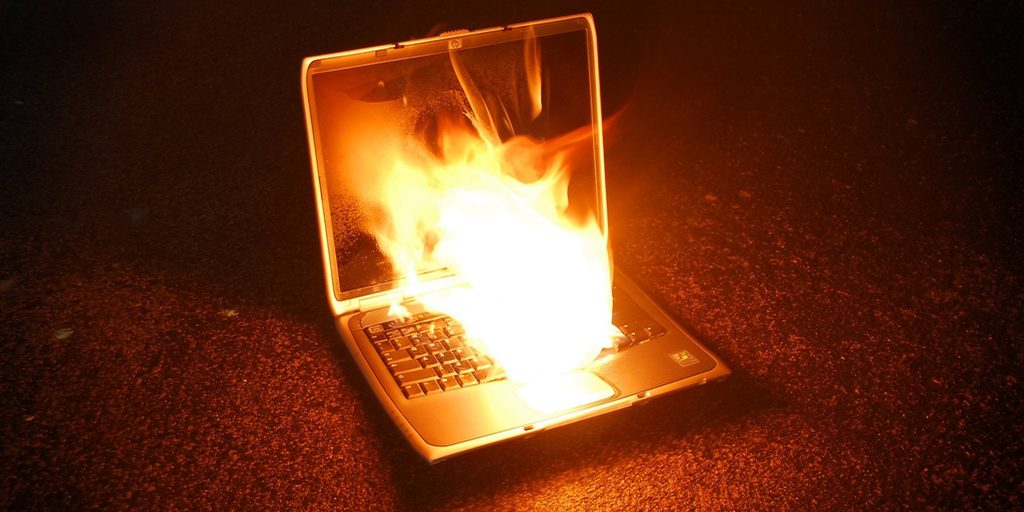As more and more devices are being powered by lithium-ion batteries, we’re seeing an increase of fires associated with malfunctions as a result. Unfortunately, some of these have occurred at the worst place and time, and a number of injuries, as well as some deaths, have been the result. Here are few things to do if you’re ever confronted with a lithium-ion battery fire in order to best protect yourself and those around you.
Why They Fail
The most-common reason that lithium-ion batteries fail is due to their design. These small batteries contain a lot of energy that is compressed in a tiny space. This causes a significant amount of force to be exerted among cells within batteries, and design flaws causes cells, as well as cases to fail under the strain. When batteries crack, liquids intermingle and oxygen gets introduced, and this creates a chain reaction, high-energy runaway explosion to take place. Not only that, but temperatures can be in excess of 1100 degrees Fahrenheit as this happens.
Warning Signs
Fortunately, most battery fires don’t happen spontaneously, and they tend to show signs of impending failure beforehand. While the lead-time will vary, a little bit of attentiveness can help you to avoid being caught up in a catastrophic explosion. Batteries will usually show signs of bulging or deforming, and this causes cases and covers to improperly close, making them easy to detect. They also tend to run hot, which can usually be felt. Batteries also can hiss, pop or even produce a distinctive odor on their road to failure, and in some cases, devices will be glitchy or have intermittent power problems.
In other words, if you start to experience problems with your battery, it’s best to immediately remove and replace it. Things will only get worse, and a fire can occur at any moment.
Suppressing Fires
Lithium-ion fires are actually chemcially-based, and extinguishing it with water will only magnify its intensity. Instead, it needs to be deprived of oxygen with chemical suppressants, and this requires a class B or any combination of ABC fire extinguishers. The greatest danger associated with lithium-ion fires, beyond being next to the source when it explodes, is that the heat from the limited explosion will cause nearby objects to spontaneously-combust. If it does spread to nearby combustible material, you can extinguish spot fires as you wait for the main one to go out.
However, you can use water to establish a perimeter around the source to prevent the fire from spreading, and you can also use baking soda in lieu of a fire extinguisher as well. In many cases, fires can re-ignite after they’ve been suppressed, particularly if internal temperatures remain high, so it’s important to isolate the source as quickly as possible in case it needs to burn out on its own.
Aside from following these general tips, you can also reduce the likelihood of using defective batteries by doing due diligence while shopping around. Make sure that you’re investing in quality batteries from reputable manufacturers that are well-reviewed. It’s also important to be aware of alerts or recalls that may apply to your batteries as well.
Finally, it’s important that you use batteries as directed, and try to avoid using chargers that are not designed specifically for your device. Improper usage is the second-leading cause of failure, but it’s also the most-preventable.
Make sure that you’re using batteries properly, conducting routine inspections and getting replacements as soon as you notice signs of problems. You may also want to double-check that you’re fire extinguisher is in good condition just to be on the safe-side. Following these simple steps can go a long way to minimize the chances of experiencing a catastrophic explosion at the worst possible time, and you’ll also be better-equipped to respond if one does occur.
